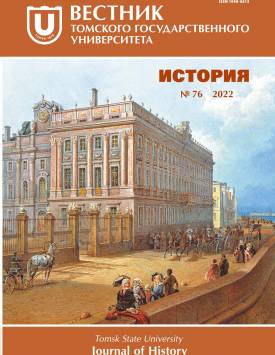Between Bessarabia and Podolia: Ladawa monastery on the Dniester as a historical and cultural landscape and a center of political traditions (anthropologist’s view)
The article is devoted to the key issues of political and anthropological characteristics of the local cultural landscape. Historiographical basis of article consists of works of great Ukrainian and Russian historian Volodymyr Antonovych and the entire list of modern Ukrainian works about the Ladawa monastery. Most of the facts described in folklore legends were verified by the author personally during his trips along the Dniester canyon and during his interaction with the monks in Ladawa. The matter of the work is to establish a correlation between geographical location and socio-psychological perception of a separate historically significant locality in the context of political anthropology. Political anthropology is considered as the study of the ideological forms of traditional political structure of society in the historical process. The concept of «political and anthropological approach» is used by the author in the connotation proposed by sociologist Georges Balandier. Also, the main term of this discipline (political anthropology) is «political tradition». The article explores transformation and existence of various forms of political traditions of the monastic community, based on the materials of the historical relationship between the location of the monastery and the perception of this location by citizens of the surrounding area. For the first time it was proposed to integrate the historical-geographical and political-anthropological approaches to obtain complete information on the symbolic meaning and cultural-psychological status of the area. The center of attention is Lyadawa male Orthodox monastery on the Dniester River. This fortification complex is located in a unique rocky gorge, on the contemporary border of Ukraine and the Republic of Moldova. The first written reference to the monastery dates back to 1159 and connected with the ethnocultural contacts between Kievan Rus’, Byzantine Empire and the Turkic-speaking Kumanian-Polovtsian tribes. During the Middle Ages, the Dniester played the role of civilization’s border, which makes the history of the monastery in Ladawa an illustrative example for the study of interstate and international contacts. The first written reference to the village Ladawa dates back to 1388. It is associated with the transition of Dniester under the political power of the Grand Duchy of Lithuania. Subsequently, the territory of the monastery became a shelter for runaway peasants and Cossack regiments. During the period of Turkish rule in Podolia (1672-1699), the monastery was saved from desecration only because of its advantageous geographical location. This fact is reflected in folklore and Ukrainian folk legends. In the 19th century there was a big fair. Within Ladawa fair framework, active cultural contacts were established between Russian Old Believers, Bessarabian Moldovans and Podolian Ukrainians. The author identifies three traditional forms of the Ladawa monastic consciousness: 1) Orthodox-Byzantine; 2) Ukrainian national; 3) Bessarabian Moldavian.
Keywords
Ladawa Monastery, Political Anthropology, Cultural Landscape, Byzantine Empire, Political and Anthropological Characteristics of the Cultural LandscapeAuthors
| Name | Organization | |
| Melnyk Viktor M. | Taras Shevchenko National University of Kyiv; Ukraine National Pirogov Memorial Medical University | melnyk1996ethnology@gmail.com |
References

Between Bessarabia and Podolia: Ladawa monastery on the Dniester as a historical and cultural landscape and a center of political traditions (anthropologist’s view) | Tomsk State University Journal of History. 2022. № 76. DOI: 10.17223/19988613/76/4
